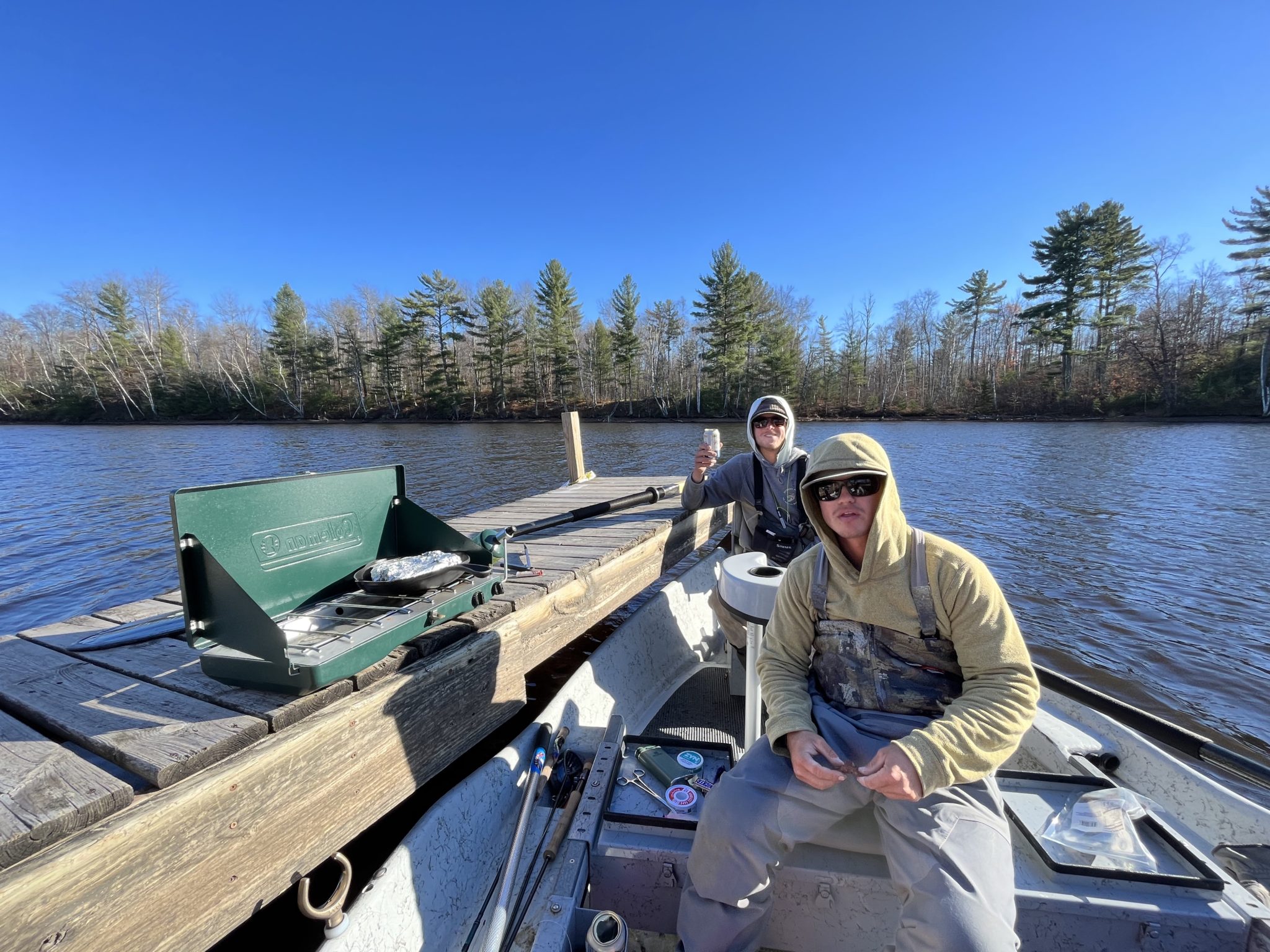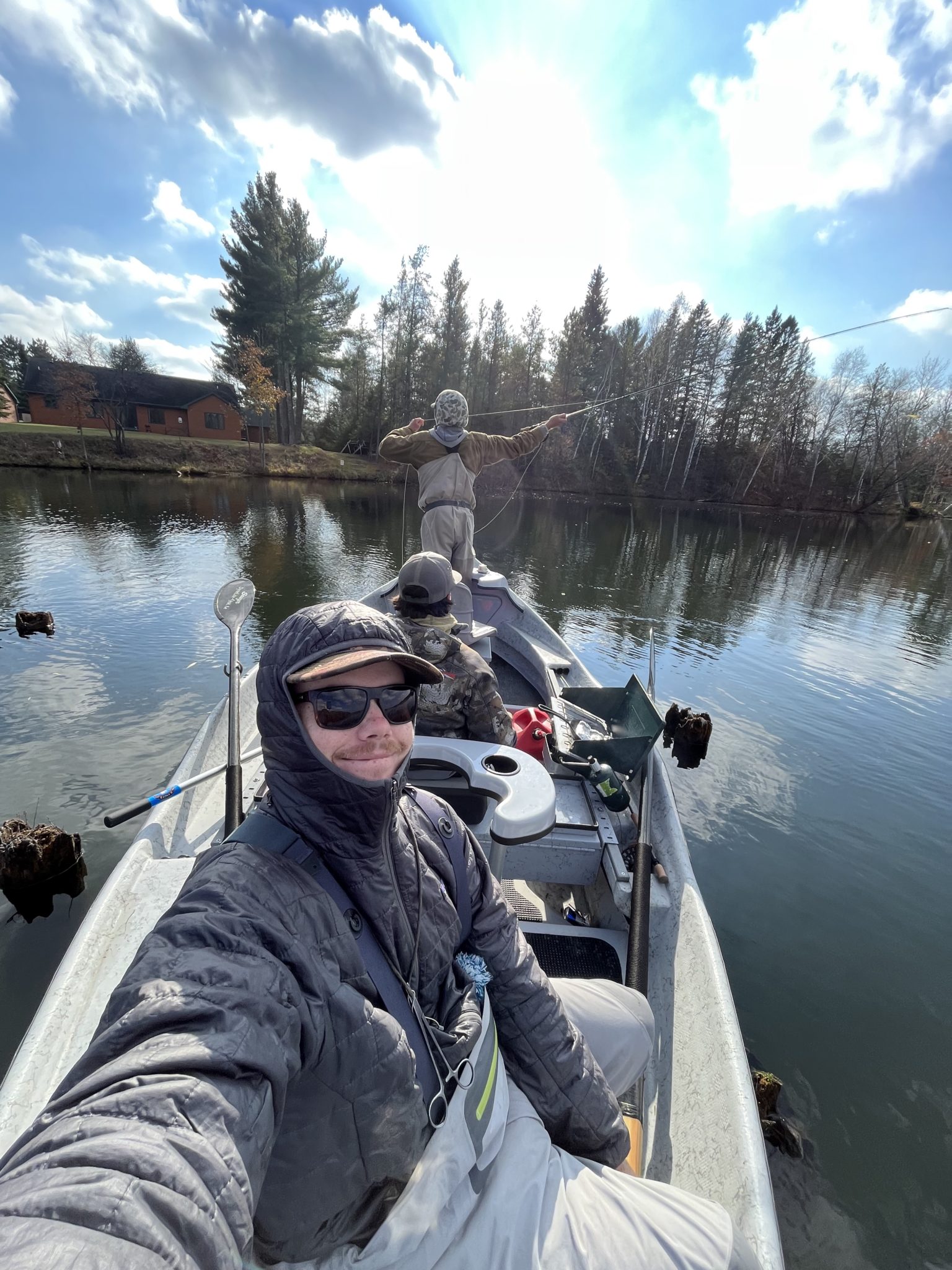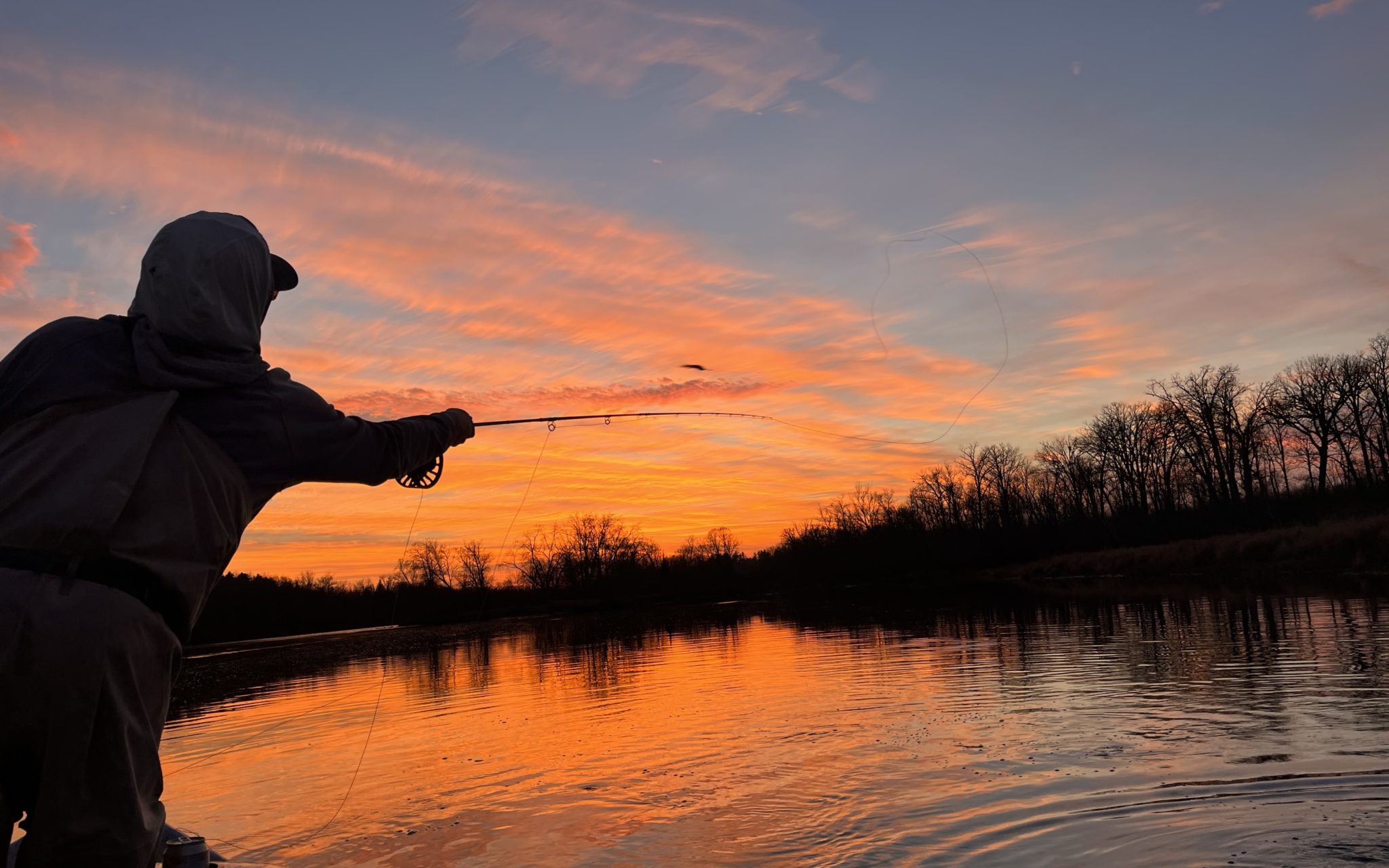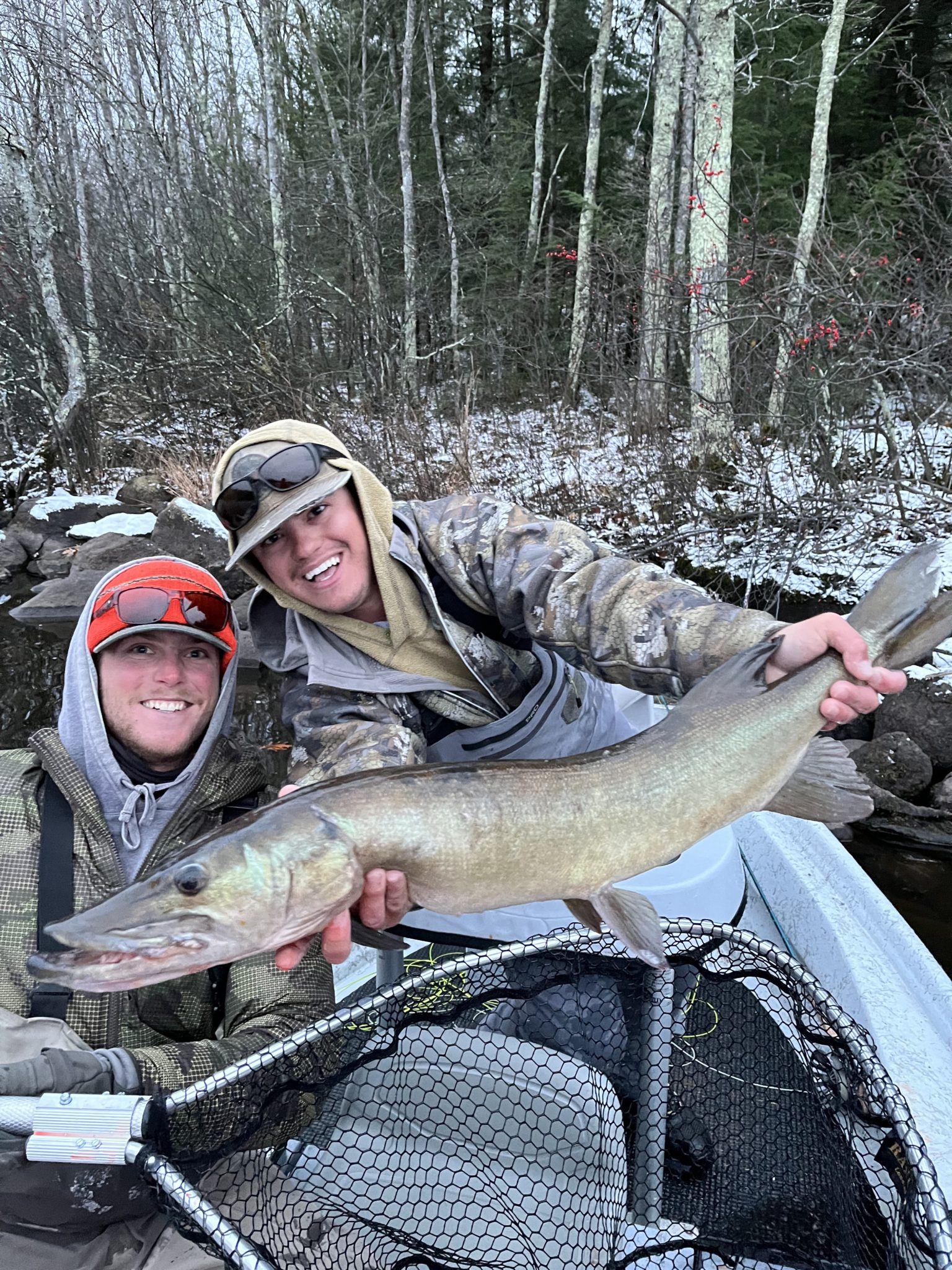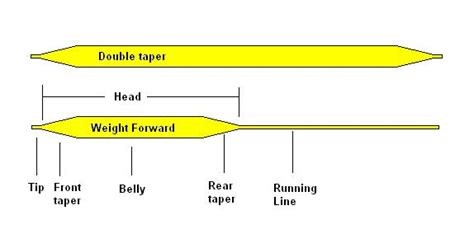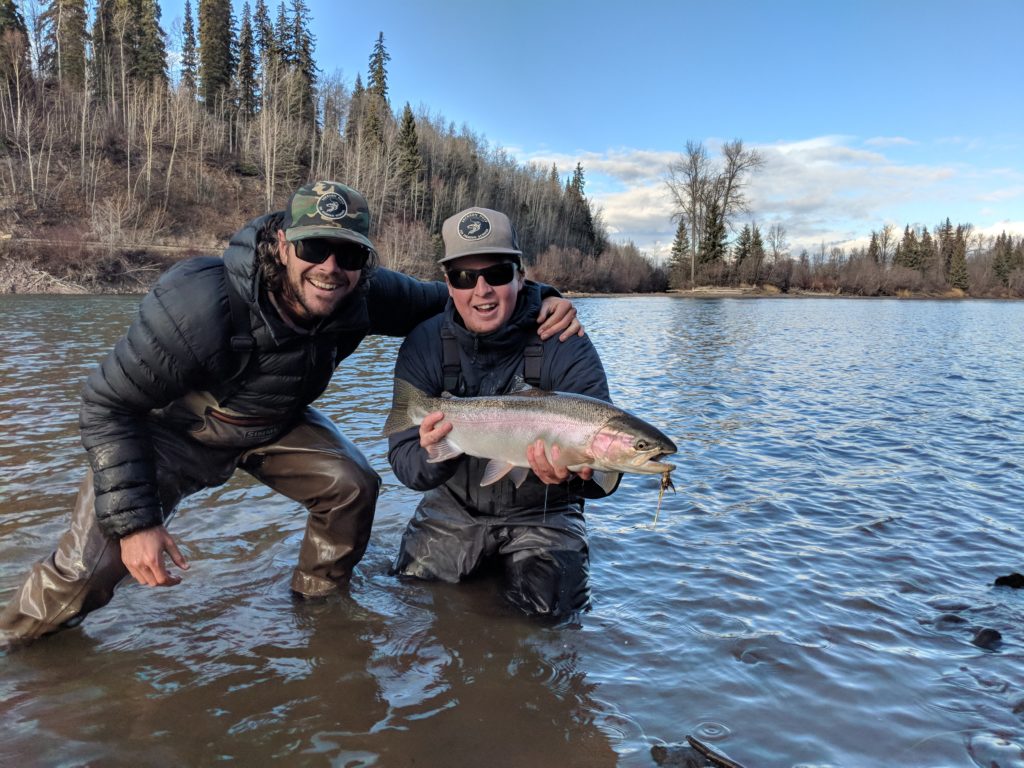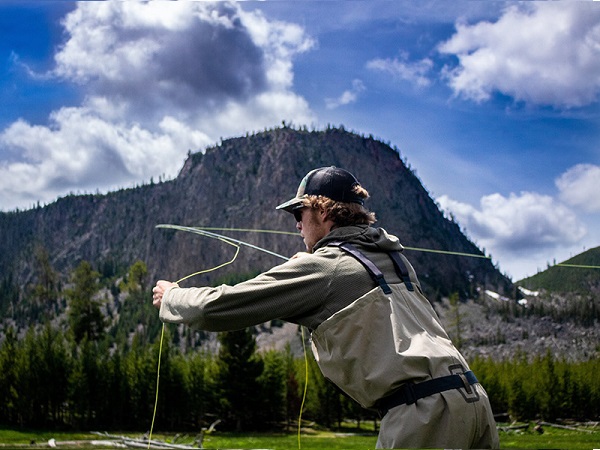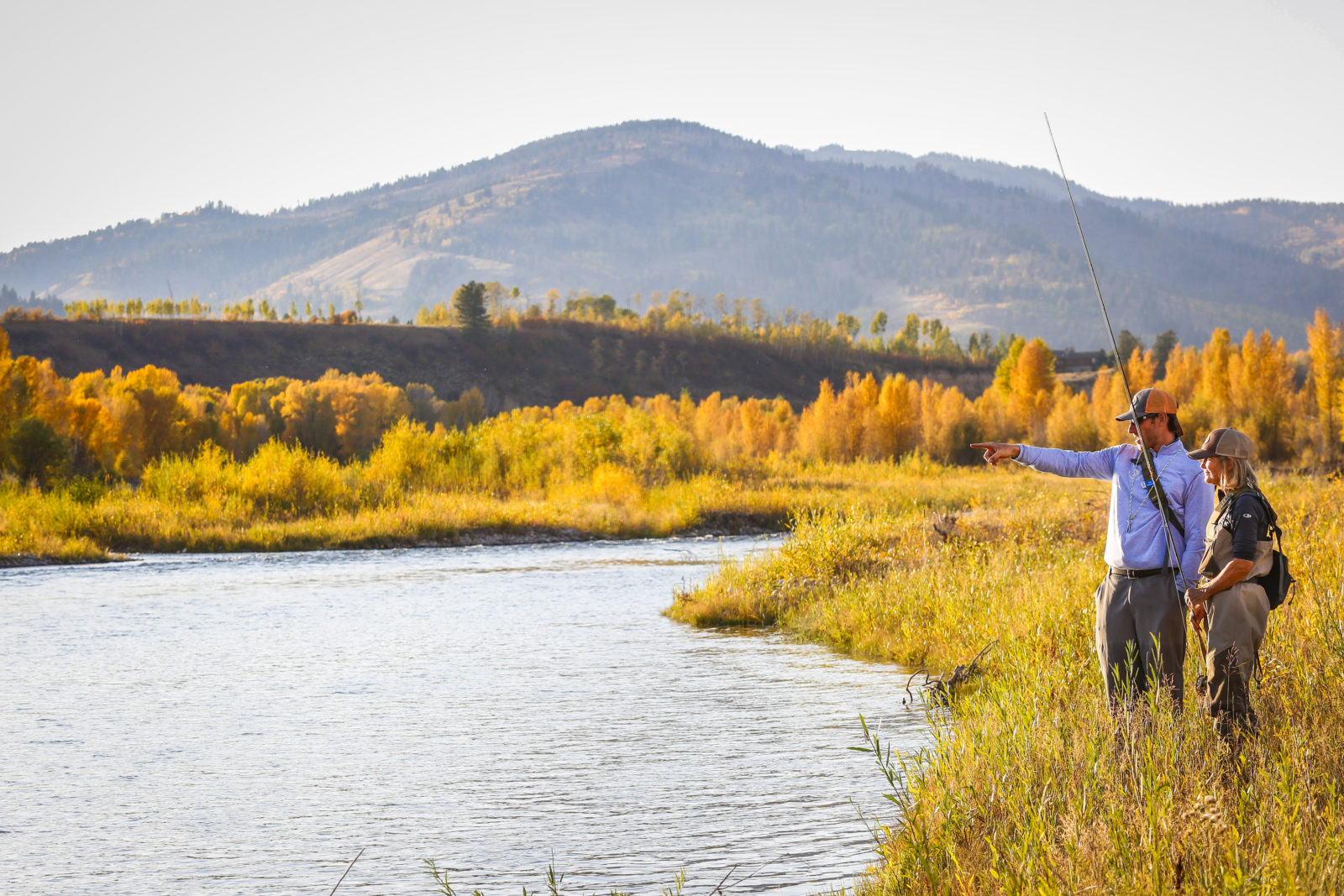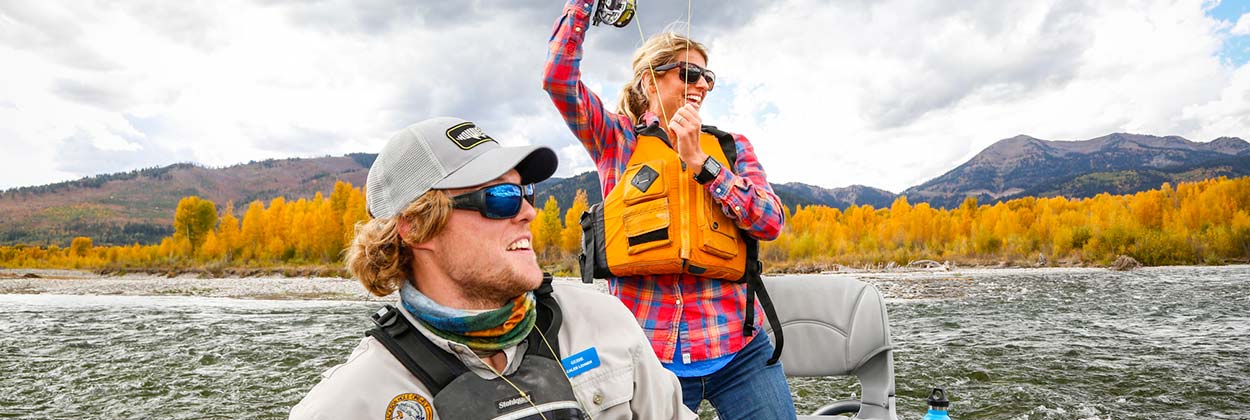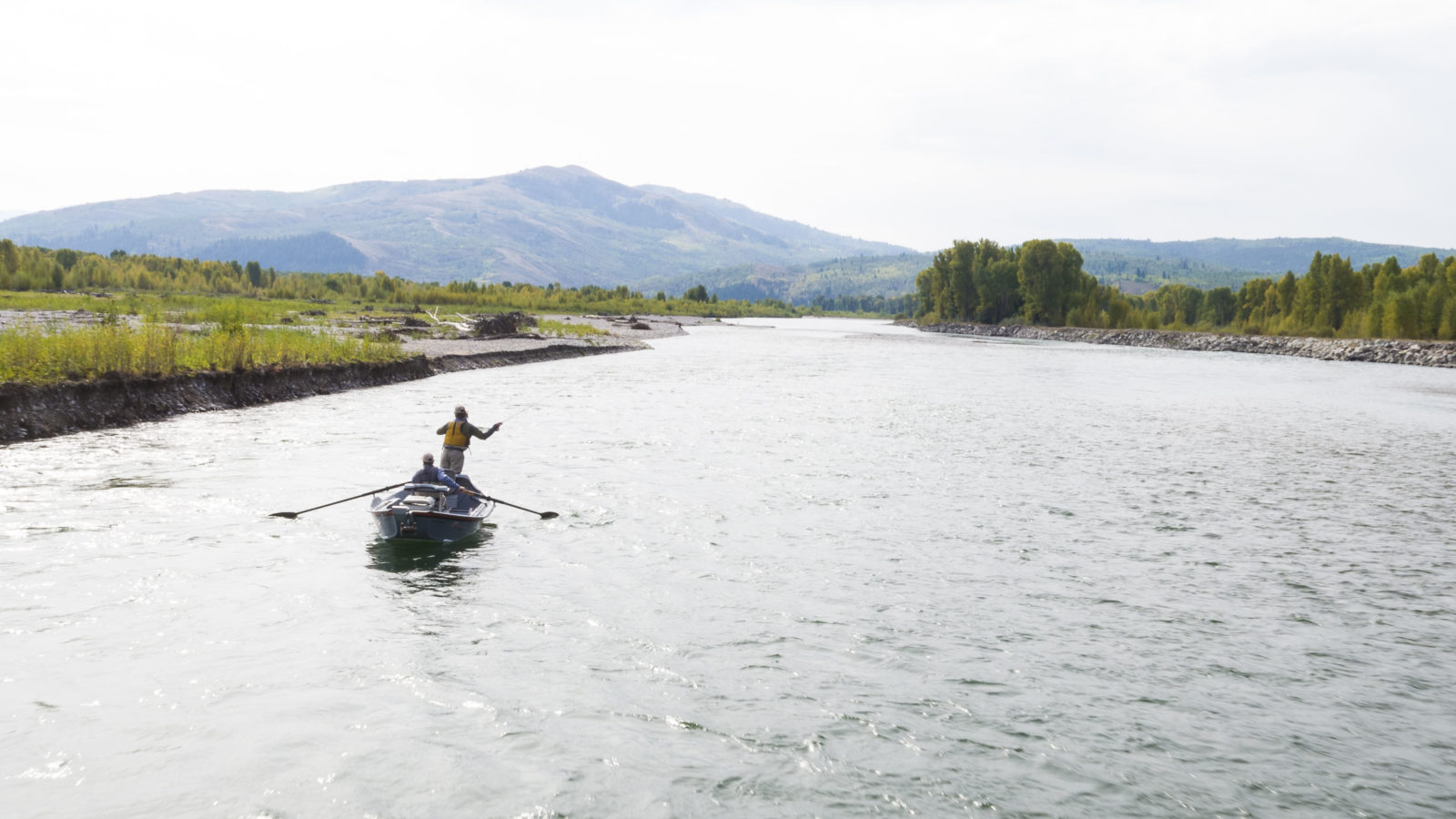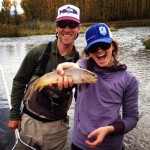Mullets, Metal and Musky: A cinderella story
I first took an interest in musky (Esox masquinongy) as a young buck spending summers at a family cottage in Lake of the Woods, Ontario. I remember looking in my dad’s flybox and wondering what kind of monster would even attempt to eat such an enormous chunk of feathers and tinsel. It didn’t take long for me to find the answer to that question. There was a musky that lived under the dock, hiding in the cribbing, that would occasionally show himself with a flash of green and a boil of the coffee colored water at the surface. Unamused by flies and lures the lively thrash of hooked fish seemed to tickle his fancy. I remember one of my cousins hooking him right next to the dock on a light jig rod setup for Walleye. One head-shake and the hook along with the fish that it held were gone. Its wide head, aggressive demeanor and toothy mouth captivated me. Unknown to me at the time, Lake of the Woods was actually a world-class musky fishery.
Well over a decade later a good friend of mine, and guide on the Rio Grande River in southwest Colorado mentioned a musky trip to Wisconsin. The thought of having an opportunity to touch one of those beasts got me excited. The timing lined up perfectly with the end of our season and at the first mention of the idea we had a team of three (Colin, Brian and myself) stoked to drive 20 hours with a driftboat for the opportunity. We planned the trip over the course of a month and landed on the idea of attempting to do the trip DIY. After discussing the trip length we landed on 11 days figuring that would give us enough time to atleast touch a musky and if the stars aligned, land one. The only problem was we were going in blind with very little knowledge other than the mouth-watering videos we watched in which everyone always seemed to catch a musky. The hook-set, figure-8 and massive flies were intimidating. I guess we figured we’d just figure it out when we got there… One thing was for certain, we had to get into character. A few nights before departing we carved each other’s heads into luscious, free-flowing mullets with the hope of impressing a musky with a business-in-the-front, party-in-the-back kind of attitude.
We arrived at our Motel exhausted after 20 hours in the car with building excitement for the days to come. The drive was uneventful, but boy is South Dakota a beautiful state… If you ever find yourself driving across the state make sure you stop at Wall Drug, South Dakota’s #1 attraction. Trust me, you won’t miss it. We got the layout of town quickly and settled at a local wateringhole for some food and beverages before retiring for the night.
Lake Days and Learning
Day one was a harsh reality check when we came to find that the only fly shop in town was closed. 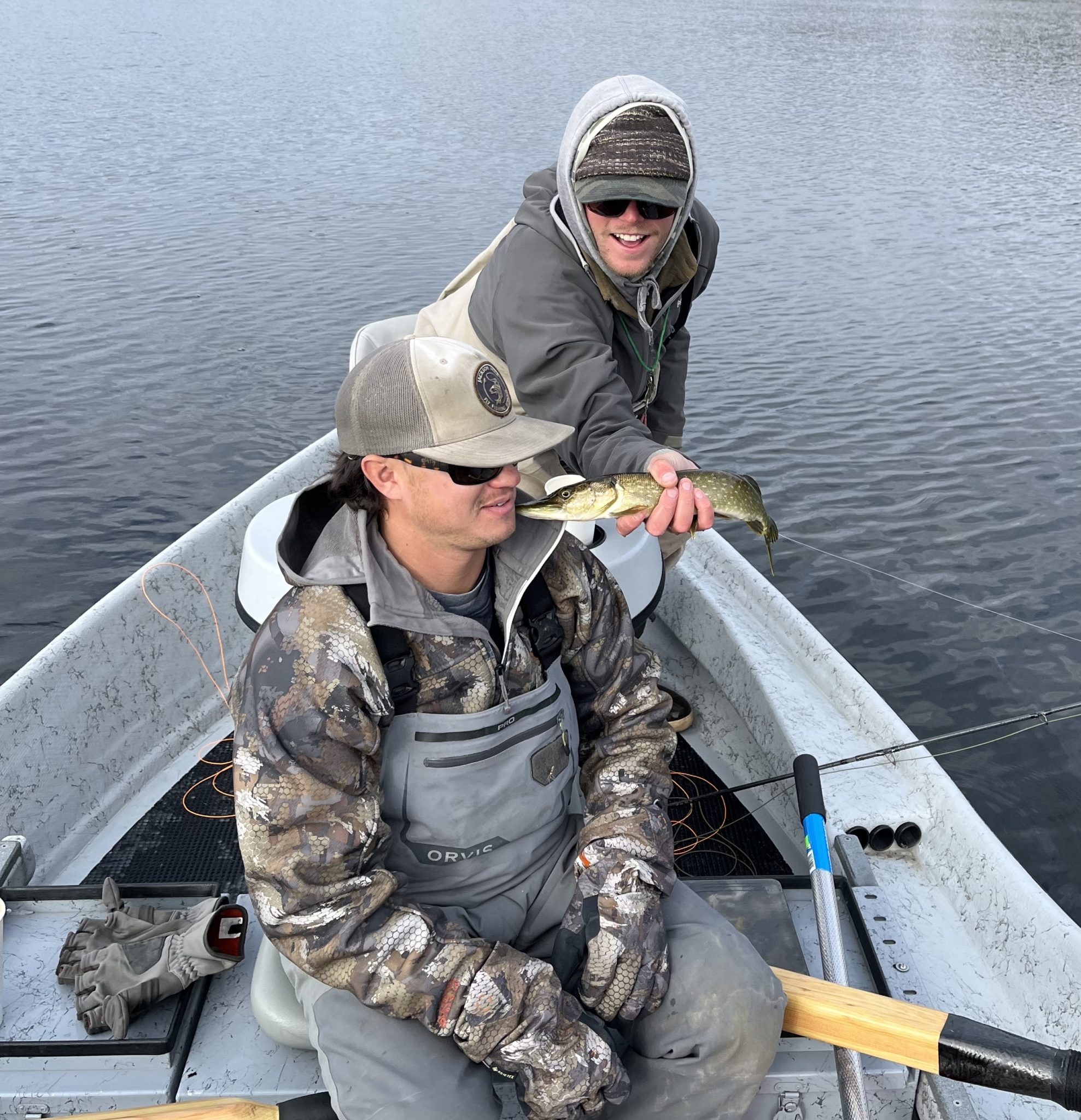 We were hoping to get some flys, talk rivers and lakes and discuss shuttle options. In an effort to salvage our first day we set out to a nearby lake with trout flys and ill-equipped rods. We got the boat in the water, fired up the trusty 6 horse, and motored to a zone we decided would be a good start. Day one was largely uneventful. A few hammer-handle pike, a surprising largemouth bass, and the undeniable need for a visit to the fly shop.
We were hoping to get some flys, talk rivers and lakes and discuss shuttle options. In an effort to salvage our first day we set out to a nearby lake with trout flys and ill-equipped rods. We got the boat in the water, fired up the trusty 6 horse, and motored to a zone we decided would be a good start. Day one was largely uneventful. A few hammer-handle pike, a surprising largemouth bass, and the undeniable need for a visit to the fly shop.
After a quick diner breakfast next door things started to come together with a semi-successful visit to the fly shop. We learned that there were no established shuttle services, hitch-hiking wouldn’t work and that guided shuttles were typically run with a guest’s vehicle. Nonetheless, equipped with appropriate fly lines, leaders, flies and some local knowledge we spent the next two days exploring more lakes in the region. As the excitement of every cast potentially being the “one” wore off, we settled into the grind that musky are known for, 10,000 casts. After exploring a vast lake system on day three we ran into some fellow anglers while taking our boat out. The gentleman approached us and asked about our boat and if we’d moved any fish. After sharing our results, he stated that it was a slow day having only caught one “small” 35in. musky. We consoled ourselves with the reminder that they were using 12in. live suckers under baseball-sized bobbers and retired to town for some food and drinks. This night marked the final night our other buddies would be in town so we showed them off in a traditional manner with the overconsumption of adult beverages. At some ungodly hour that night we met Jim, our first potential for a shuttle driver.
A lack of response from Jim, slight headaches and severe winds on day four limited the water we could access. After learning about the affinity muskies have for dams, we settled for a wading location right below a dam with a gorgeous plunge pool that would surely hold a fish. 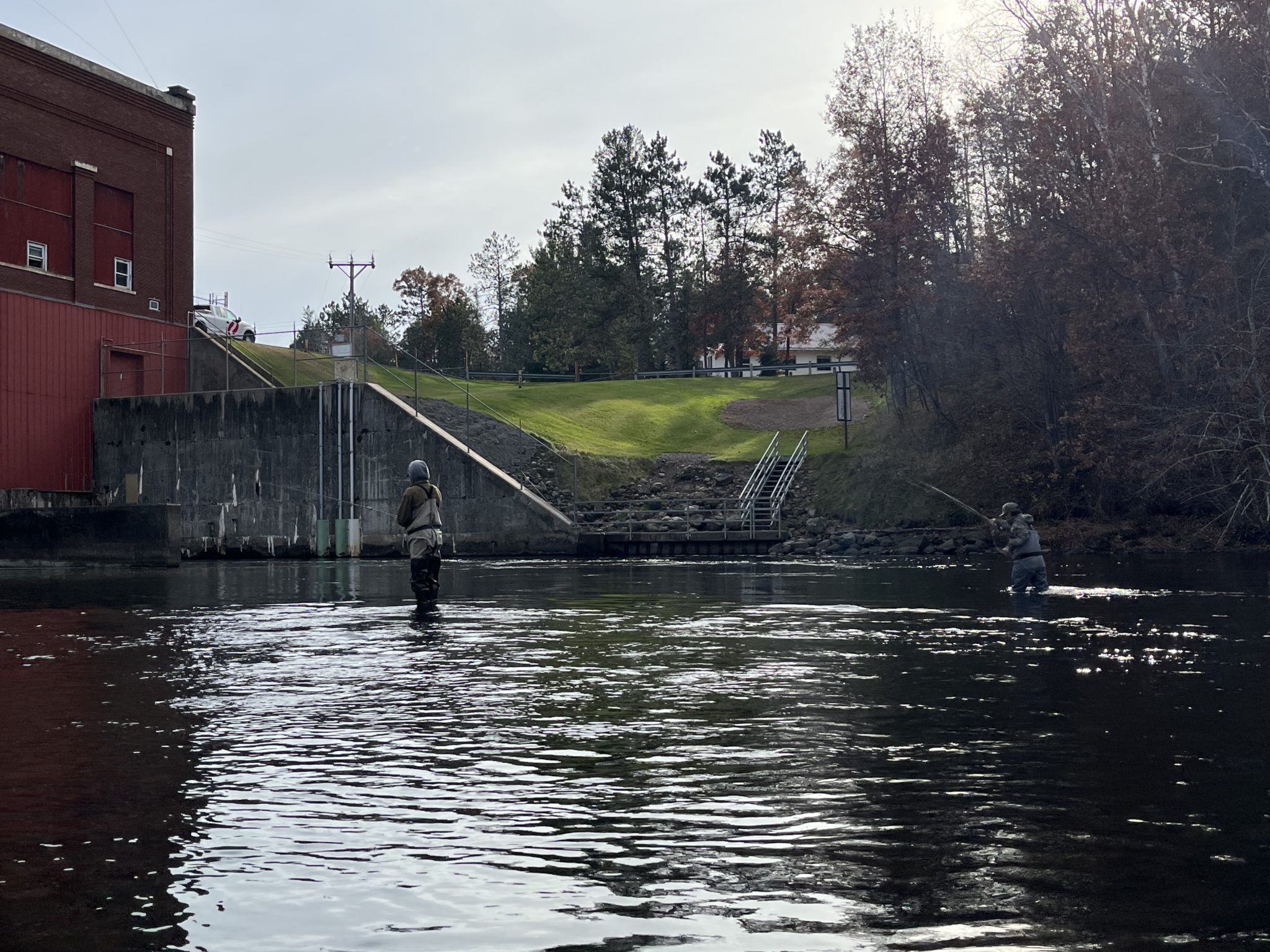 While no musky were seen that day we were pleased to have witnessed a behemoth of a sturgeon breach the surface. Humbled by what seemed like a promising option at the plunge pool we were hungry for more river days… from the comfort of a boat. After our nightly visit to the local wateringhole and a few frames of bowling we returned to the motel desperate for a shuttle driver. Coincidentally, we ran into the manager of our motel who mentioned that her son was in town. Eagerly we mentioned the opportunity to make some quick cash for her son and got his number. Enter Preston, our shuttle driver. Stoked about the idea of a true river day we got in touch with Preston and agreed to meet at the take out at 10am.
While no musky were seen that day we were pleased to have witnessed a behemoth of a sturgeon breach the surface. Humbled by what seemed like a promising option at the plunge pool we were hungry for more river days… from the comfort of a boat. After our nightly visit to the local wateringhole and a few frames of bowling we returned to the motel desperate for a shuttle driver. Coincidentally, we ran into the manager of our motel who mentioned that her son was in town. Eagerly we mentioned the opportunity to make some quick cash for her son and got his number. Enter Preston, our shuttle driver. Stoked about the idea of a true river day we got in touch with Preston and agreed to meet at the take out at 10am.
River Days
We woke up with an undeniable stoke stating that ‘today is the day’; a phrase that would become as routine as our daily trip to the diner. We blasted our new favorite song “The Musky Groove” and got to the boat ramp early. We got the boat and rods rigged, dropped her in the water and sent Brian off to run the shuttle with Preston. An hour later we got a text that Preston hadn’t shown yet, of course… Eventually, two and half hours after the agreed upon time, Preston showed. It was a late start but we were finally floating down a river.
Being on the river was an incredible change of pace, and as primarily trout anglers we felt at home navigating the boat on moving water. The river was a sight for sore eyes with clear water and white pines towering to the sky along both banks. Aggressive rock shelves, downed trees, large boulders and deteriorating beaver dams speckled amongst expanses of sand decorated the river bottom. The first few hours were spent with the constant reminder that we were NOT targeting trout, and therefore had to shift the lens from which we were analyzing the river. We targeted slow inside bends, mid-river troughs/shelves, log jams, and the slowest ‘carp’ water we could find. Hopes were high as we spooked schools of suckers into the ‘darky creepies’ following them up with our flys and aggressively retrieving them like a sucker swimming for its life.
As the days of fishing unfolded the music we listened to would evolve. On this particular day we found ourselves in the mood for metal. As the sounds of guitars and drums blared in the background, Brian let out a burst of excitement and adrenaline after moving what we decided was a musky. It had to be. It showed nothing but a boil on the surface close to where his fly had landed on the backside of a log jam. He retrieved his fly all the way to the boat and proceeded with a long figure-8 before hammering the spot of commotion again, nothing. Though unconfirmed, we were thrilled at the prospect and that we were making moves in the right direction, and had learned that Musky like metal. Daylight ran out quickly with our late start and the last few river miles were spent pushing in complete darkness. Luckily there was a bridge near the boat ramp…
At breakfast we decided to try a new section of river, and after only an hour and half wait on Preston we were back in the boat heading downriver. This was the section directly below where we had waded a few days prior. The river bends carved through the dense landscape with authority branching off in very few side channels. Only a couple miles into the float we saw something. The river took a large bend, came off a shelf, passed a rotting beaver dam and a few fishy logs only to straighten out and widen into a 200 yard section of gorgeous lakey river with a sandy bottom. It was at this spot that we would SEE our first musky of the trip, several of them actually.
Within the first few yards of the slowing water we spotted fish lurking amongst submerged logs. We spent the next few hours blasting metal picking the area apart and allowing time for the Musky to rest between passes. The fish were proving to be stubborn about showing interest in flies. 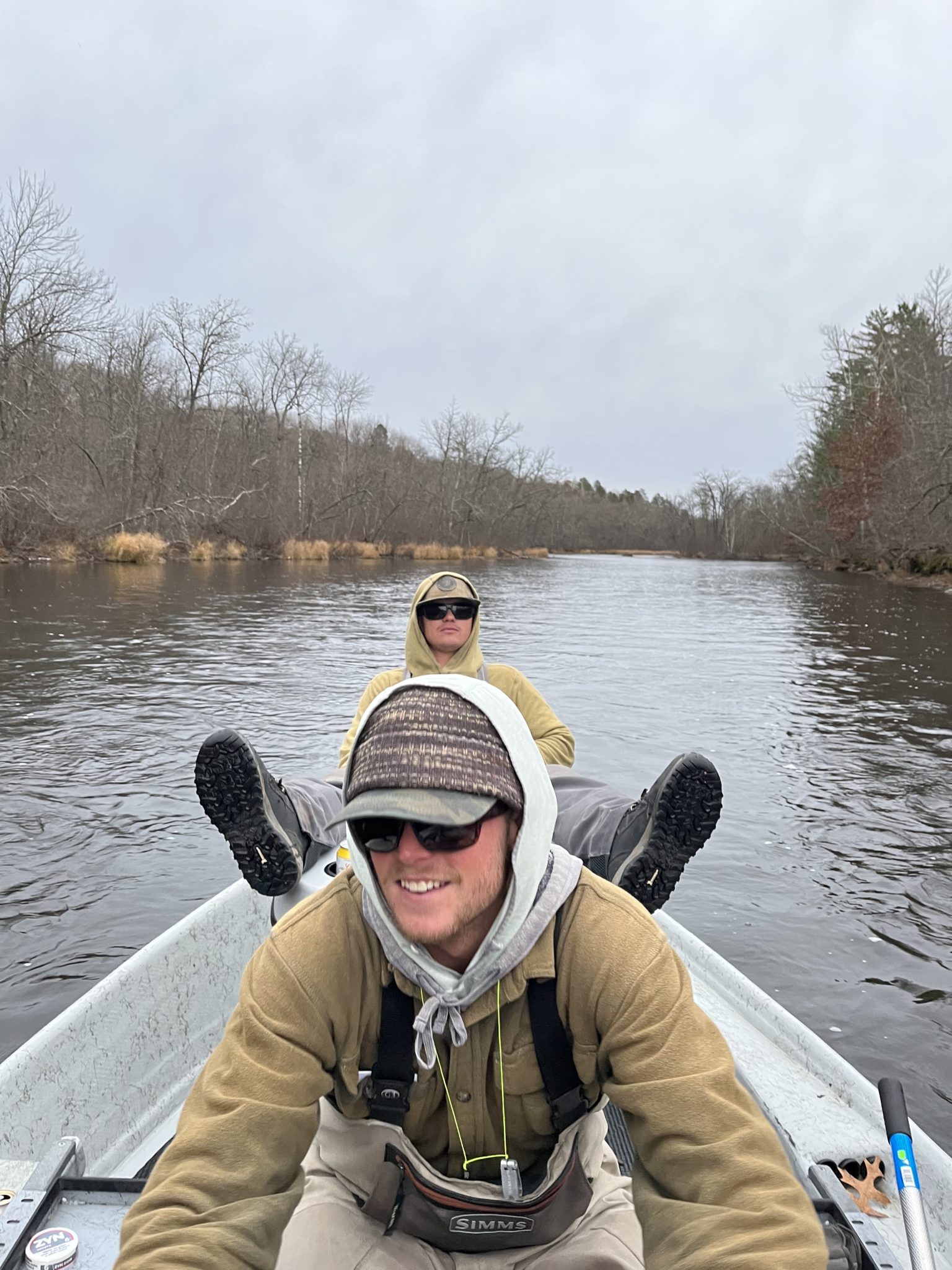 We changed flies, fly lines and stripping techniques hoping that a subtle change would prompt an eat, but nothing came of it. Running out of daylight with plenty of river miles ahead of us we began to work our way downstream. As we neared the end of the slow water Colin made a cast. He retrieved his fly close to the boat and paused to look over his shoulder at Brian and I. In that brief moment of exchange between us, his line went tight. He heaved on the rod in an attempt to get some form of a hookset as we erupted with excitement. Brian lunged for the net while the fish began to thrash on the surface and in the blink of an eye, it was gone. We celebrated with high fives, hugs and the pouring of a drink. Not only had we finally seen a musky, but we hooked one. Little by little, things were coming together. We found the boat ramp in the dark and made plans to return the following day for some redemption.
We changed flies, fly lines and stripping techniques hoping that a subtle change would prompt an eat, but nothing came of it. Running out of daylight with plenty of river miles ahead of us we began to work our way downstream. As we neared the end of the slow water Colin made a cast. He retrieved his fly close to the boat and paused to look over his shoulder at Brian and I. In that brief moment of exchange between us, his line went tight. He heaved on the rod in an attempt to get some form of a hookset as we erupted with excitement. Brian lunged for the net while the fish began to thrash on the surface and in the blink of an eye, it was gone. We celebrated with high fives, hugs and the pouring of a drink. Not only had we finally seen a musky, but we hooked one. Little by little, things were coming together. We found the boat ramp in the dark and made plans to return the following day for some redemption.
Preston showed up on time (or close to it) the next morning giving us plenty of daylight to work the spot we had found. We took a new approach getting into the zone from a small side channel that joined right above the beaver dam. Utilizing what we learned the day before, we were optimistic that ‘today is the day’. Unfortunately, that was not the case. The musky were there again, but after several deflating hours with no interest from the fish we cut our losses and made our way to the boat ramp.
The following morning we decided to explore the section below where we had 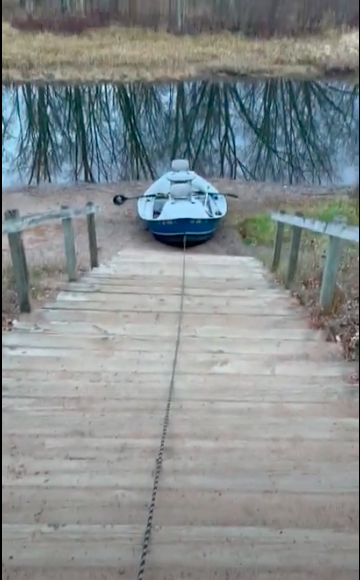 spent the last two days. While running the shuttle Brain took a peek at the location we decided we would take the boat out at. He expressed his concern as we talked about other options only to decide that surely we could make it work. While the water was incredibly fishy the fishing was largely uneventful. We got to the boat ramp with a fair bit of daylight left at which point Colin and I saw the “boat ramp” for the first time. We now understood Brian’s concern. A small sandy beach butted up to a flight of about twenty stairs followed by 30 feet of gravel and finally and a line of 6×6 pylons too narrow to fit a boat through. We would have to get creative. A full winch, a 20 foot NRS strap and a stretched anchor line did the trick. We took our waders off in the dark and began thinking about a game plan for the next day.
spent the last two days. While running the shuttle Brain took a peek at the location we decided we would take the boat out at. He expressed his concern as we talked about other options only to decide that surely we could make it work. While the water was incredibly fishy the fishing was largely uneventful. We got to the boat ramp with a fair bit of daylight left at which point Colin and I saw the “boat ramp” for the first time. We now understood Brian’s concern. A small sandy beach butted up to a flight of about twenty stairs followed by 30 feet of gravel and finally and a line of 6×6 pylons too narrow to fit a boat through. We would have to get creative. A full winch, a 20 foot NRS strap and a stretched anchor line did the trick. We took our waders off in the dark and began thinking about a game plan for the next day.
The Honey Hole
After the last week of breakfasts next door people began to take note of us, asking if we’d caught one and keeping our coffee mugs topped off with joe too hot to drink. A table of gentlemen that had been there everyday asked about the trip and lended a hand in suggesting where we might go. Having won a tournament at this spot over the summer with four musky in a single day, Butch called the zone his honey hole. After a quick scout on google maps we packed the gear up and set out to have a day. The honey hole seemed like the perfect environment to find musky with slow moving water, large submerged boulders, weeds, coffee colored water and a single run that poured down from a plunge pool into a lakey piece of water lined with rock structure.
It didnt take long for the Butch’s advice to prove worthy. 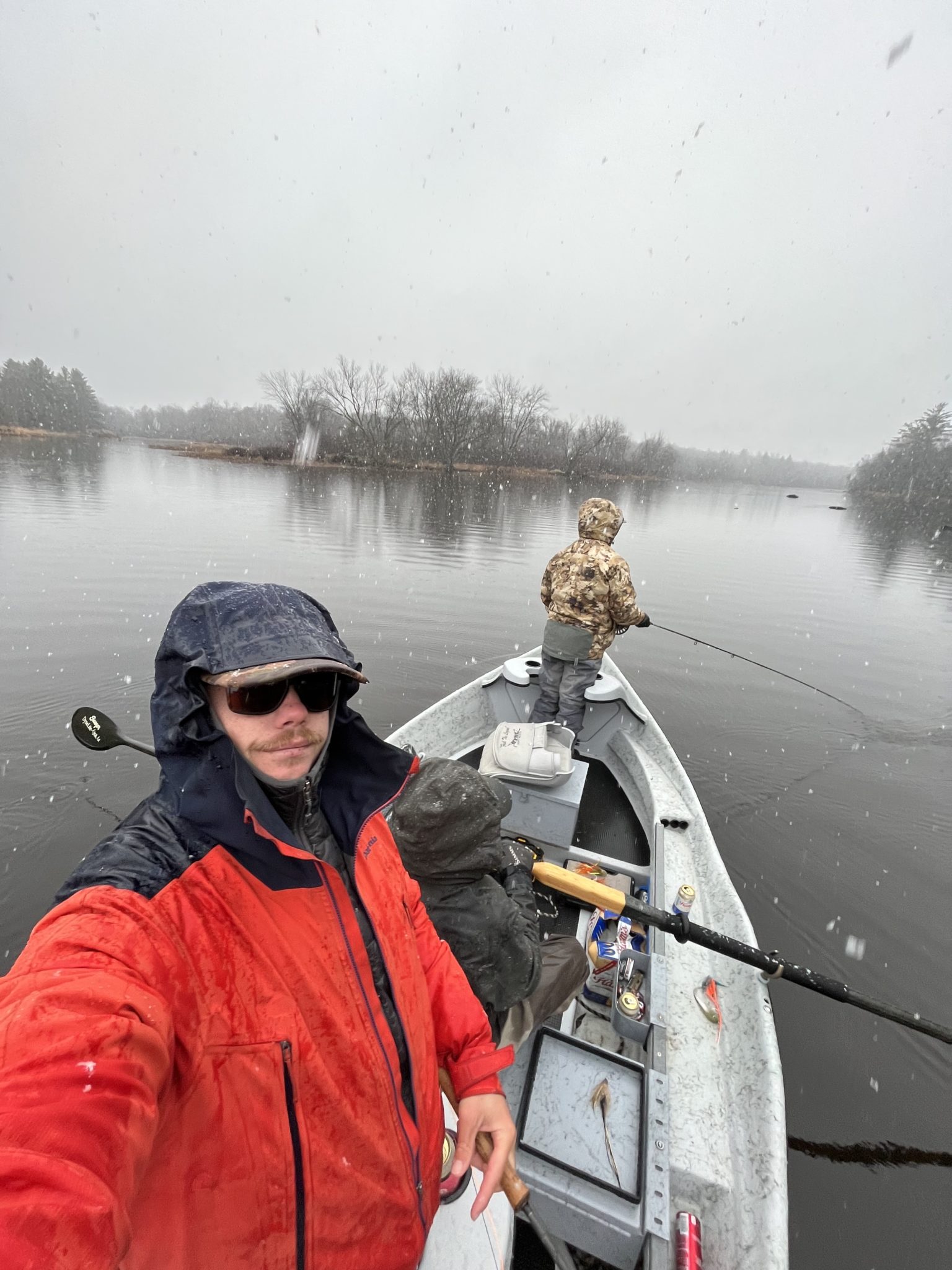 The wind was ripping and snow was beginning to fall, nonetheless, within an hour of our first day at the spot we touched a musky. The quick success created a fixation that would consume the remainder of our time in Wisconsin. For three days we grinded the spot finding more success with every visit and before we knew it we were putting our boat in for the final day of fishing of the trip.
The wind was ripping and snow was beginning to fall, nonetheless, within an hour of our first day at the spot we touched a musky. The quick success created a fixation that would consume the remainder of our time in Wisconsin. For three days we grinded the spot finding more success with every visit and before we knew it we were putting our boat in for the final day of fishing of the trip.
As we pushed the boat off for the last time with ‘Musky Groove’ blaring in the background we shared the mutual understanding that today had to be the day. We were running out of time. We worked the area methodically returning to spots where we had interacted with muskie over the last few days. It didn’t take long to find the fish. Colin made a cast at the rock wall where moving water from the run brushed up against jagged rocks and retrieved his fly. A musky appeared behind his fly and began to follow, with a burst of energy the fish pounced on its prey and inhaled the fly. Colin kept his tip in the water and reefed on the fly line with enough force to rip the head off of a trout, just how we drew it up. One, two, three big strip-sets, surely the fish was hooked. With one powerful head-shake the fish came off and retreated into the depths leaving us baffled at the event that had just unfolded. Colin followed the moment with a long figure-8 hoping to entice the fish into taking another swipe at the delicious looking fly. Nothing. Regardless, we laughed it off and took a moment to decompress while we gave the fish a chance to forget about the sting of a metal hook in its face.
Twenty minutes later we were back at it. We were working our way across the current that poured over boulders into the large pool when Colin made a cast upstream towards a line of weeds on the river-right bank. The fly landed and with a single strip the water erupted as a musky took hold of his fly. The explosion caught us all off guard as Colin did his best to drive the hook into the fish’s boney jaw. The musky came to the surface rolling like a gator and as quick as it started, it was over. We watched as the fish swam back to its protected spot amongst the weeds. Was the hook sharp enough? Was the hook-set hard enough? Deflated, but far from defeat we sharpened our hooks (an act that had also become as religious as breakfast at the diner, the Musky Groove and claiming that ‘today is the day’).
We continued down the right bank with the thought of losing two fish in the back of our minds. Shadows stretched into the water as the sun approached the horizon. It was either going to happen now or we would have to wait until next year for another chance at these elusive fish. We circled back and decided to take another pass at the rock wall that produced an opportunity for Colin hoping that maybe the fish had found its appetite again. We casted at the rocks with authority knowing it could happen at any moment. A couple strips later Brian’s massive pink and white fly disappeared as the biggest musky yet ambushed from the darky creepies. With his tip down Brian executed his strip-set to perfection putting his whole body into three aggressive strips that seemed forceful enough to have moved a car. “I GOT EM!” Brian exclaimed. Our hearts raced and with a flash of green, the fish was cruising back towards the bank seemingly unfazed (or unimpressed) by its encounter with us. It was at this moment doubt started to creep into the boat. Was that it? Would we have to wait for next year?
A Cinderella Story
With 30 minutes of sunlight we were making our final casts when a musky followed Brian’s fly to the boat unconvinced. He aggressively figure-8ed his fly and the fish appeared again. It hovered as it inspected Brian’s fly with curiosity. “He’s on it, He’s on it!” Brian said in shock as he continued to move his fly in the water. The fish disappeared and a determined Brian continued to figure-8 his fly for what seemed like an hour. Out of the darkness the fish emerged once again to inspect his fly before retreating back to the depths. Our hearts raced with the tease but the wind was back in our sails.
We continued to hammer the wall with casts and only moments later it happened. Brian retrieved his fly and went straight into the routine figure-8 when out of the coffee a mouth full of teeth appeared and clobbered his fly. One ungodly hookset with enough mustard to double-over his 11wt. and he buttoned up. “I GOT EM!”, this time he sure did. The fish pulled hard and just like we were told, Brian didn’t give an inch of line. As Colin pulled up his waders, having been taking a leak at the moment I frantically grabbed the net and stabbed it into the water. It happened. Our screams of joy echoed across the water. We admired the fish, got a quick grip-n-grin and released her. It was a true Cinderella story. What a fish.
Looking Back
We returned to Jackson after 20 hours in the car exhausted, incredibly humbled and beyond hungry for more. Musky are a lot more than just the fish of 10,000 casts. They are your enemy and best friend at the same time. The process is largely punishing both physically and mentally and will make you question anything and everything about yourself as an angler. I think that it takes a certain kind of angler to truly enjoy the pursuit of musky. While success is unlikely, if the stars align and you get the chance to interact with a cabbage dragons or even be a part of the process, it is incredibly rewarding. Trips like these forge brotherhoods over friendships through adventure and tolerance for uncertainty and adversity. As we settle down for winter and break out the skis I can’t help but find myself looking forward to next fall. We will be back, Wisconsin. Thanks for the experience.

